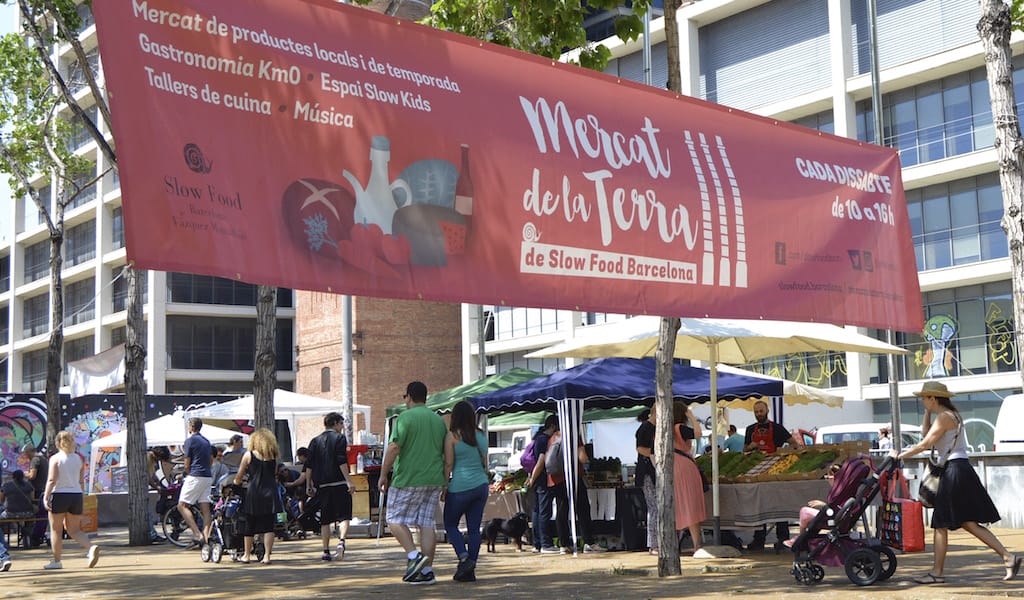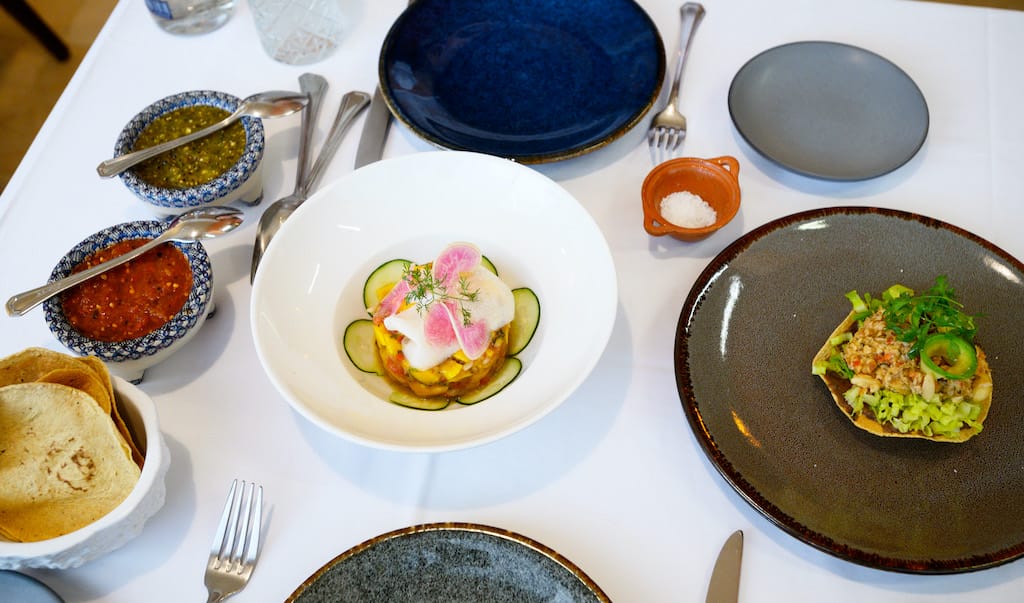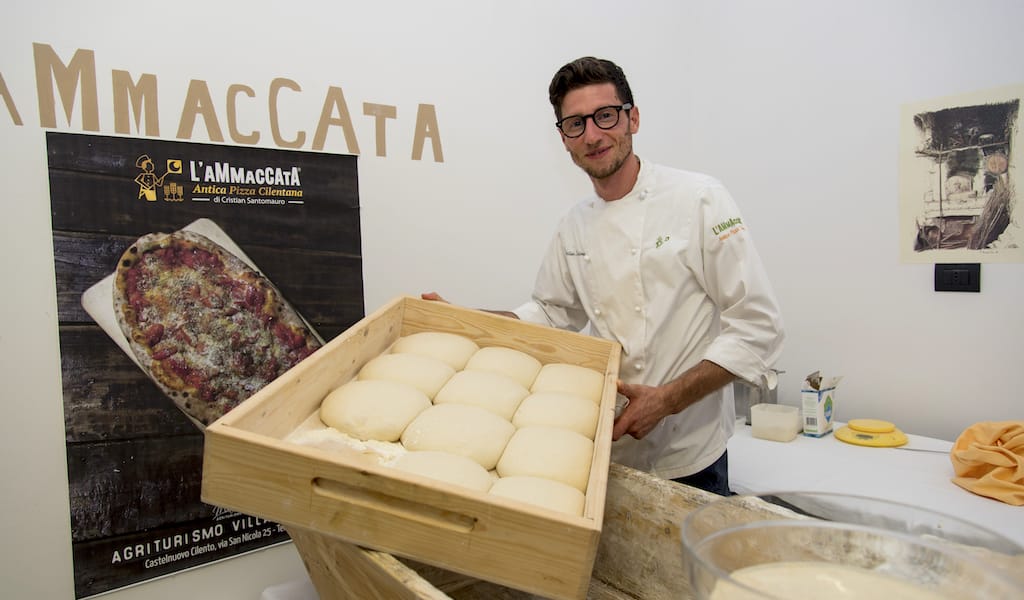The Slow Food movement may be all about slow living, but its spread around the world has been nothing short of speedy. What began as a protest against the opening of a McDonald’s in the Piazza di Spagna in Rome in 1986 has morphed into an international organization that safeguards some of the most authentic and unique local food products in 160 countries across the world, and even receives UN recognition and support for this important work.
In Spain, the Slow Food movement mainly consists of independent regional groups made up of chefs, producers and other food-related professionals, and its influence continues to grow as new initiatives are gradually launched. Catalonia, in particular, has seen a flurry of activity with its 65 restaurants – 25 in Barcelona alone – and nine convivia (Slow Food local chapters), which organize Earth Markets – farmers’ markets that have been established according to the Slow Food philosophy – in various villages.
Each convivium is charged with protecting what Slow Food has dubbed their Ark of Taste – the products local to each area that are either at risk of disappearing or produced in very small quantities. Safeguarding these invaluable treasures in perhaps one of the most important projects undertaken by the movement. There are approximately 170 Ark of Taste products in Spain, more than 50 of which hail from Catalonia, like ganxet beans, the cured sausage llonganissa de Vic, trumfera tomatoes, Santa Teresa (purple) broccoli, the dessert wine Malvasía de Sitges, Ripollesa sheep, sarrut olive oil and Penedès rooster, to name a few.
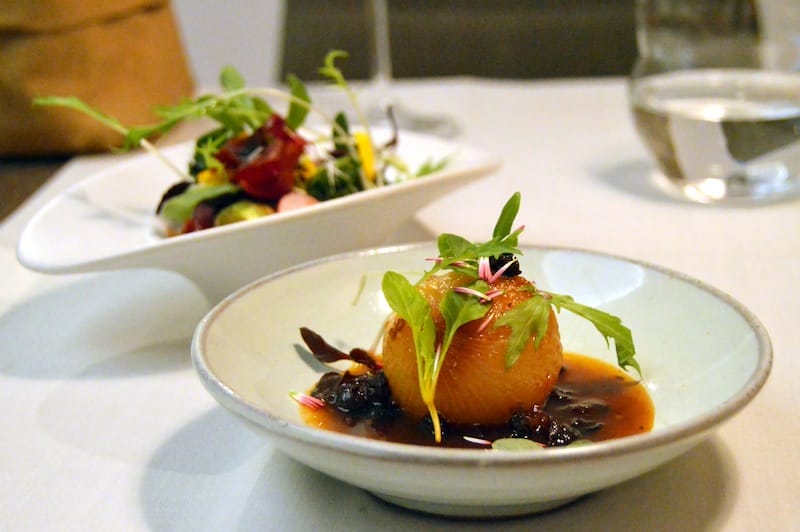
Daniele Rossi, owner of the vegetarian restaurant RasoTerra, founded the Barcelona convivium in 2010. The group is named Slow Food Barcelona Vázquez Montalbán, a tribute to the iconic Barcelona-born food writer and gastronome, who was a staunch defender of the local cuisine and the first Catalan member of Slow Food International.
Every Saturday morning (although the dates change in July and August, as announced on their Facebook page), they organize the Barcelona Earth Market in the Tres Xemeneies Park, located on the site of a former power station and steps away from the Paral·lel metro station. This small, cozy market stocks fresh vegetables, fruits and herbs, honeys, chocolates and vermut, all of which is local and Slow Food approved. From 10 a.m. until 4 p.m., visitors can enjoy a tipple, eat a seasonal snack and purchase some of the best local ingredients in the relaxed barrio atmosphere.
Other convivia can be found in the regions surrounding Barcelona. The Maresme convivium lies north of the city along the coast, while Garraf-Penedès covers the territory south of Barcelona, an area that includes wine and cava country, and Vallès is situated northwest of the city. A diverse group of wine makers, ranchers, fishermen, farmers and restaurateurs form the backbone of these organizations.
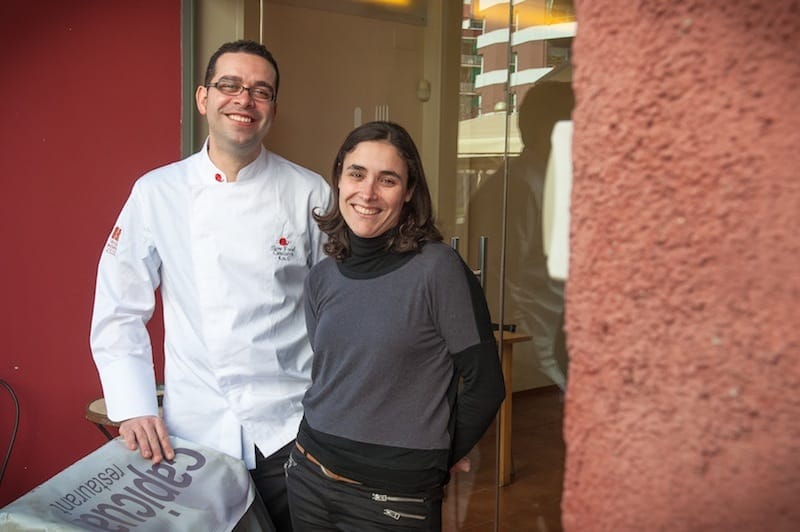
The menu at Restaurant Capicua in Cerdanyola del Vallès, run by the chef Isaac Gómez, a member of the Vallès convivium, honors local producers by naming not just ingredients, but where they come from. Gómez explains that Slow Food restaurants must follow numerous rules, like offering at least six Km 0 dishes, where 40% of the ingredients, including the main ingredient, must be local, the remaining 60% of the ingredients must belong to the Ark of Taste or certified by Slow Food as ecological, and none of the ingredients can be transgenic or, in the case of meat, have consumed transgenic foods. These restaurants must also buy products from at least eight local producers, use at least five local Ark of Taste products and feature local wines from small producers on their wine lists.
Using these criteria as a starting point, the various Slow Food restaurants in Catalonia build a menu infused with their own cooking style, whether Catalan or international, innovative or traditional – anything is possible. In Barcelona alone, the options range from vegetarian cuisine at RasoTerra to the meat-heavy menu at El Filete Ruso, from Michelin-starred restaurants like Lluerna to neighborhood bar-taverns like Bar Seco, or even wine bars like Monvinic, which is one of the best in Europe. Some restaurants specialize in Catalan cuisine, like Sergi de Meia, while others focus on other Spanish cuisines, like Llamber, an Asturian-style gastrobar, and El Chigre 1769.
Whatever the style, each dish produced in Slow Food restaurants is a heady combination of cultural value, social responsibility, sustainable decisions and unique local flavors – tons of richness packed in every little bite.
Km 0 Restaurants in the nine Catalan convivia: https://www.km0slowfood.com/restaurants-km0/
 June 8, 2022 Nicos
June 8, 2022 Nicos
It’s hot in Mexico City and Gerardo Vazquez, head chef of Nicos Restaurant, is thinking […] Posted in Mexico City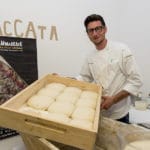 September 21, 2020 CB on the Road
September 21, 2020 CB on the Road
Located south of Naples, Cilento is a region that has it all: sea (the Tyrrhenian), […] Posted in Naples October 11, 2018 Taverna a Santa Chiara
October 11, 2018 Taverna a Santa Chiara
Take a small space in a strategic location, add two young and idealistic owners, and […] Posted in Naples
Published on July 06, 2017
Related stories
June 8, 2022
Mexico CityIt’s hot in Mexico City and Gerardo Vazquez, head chef of Nicos Restaurant, is thinking about cooling off. “Spring in Mexico City is hot,” he says, “And for me, it is very connected to Lent…so, fresh foods, cool things, vegetable-focused dishes.” Tostadas are on the menu at Nicos today – crunchy baked tortillas, one with…
September 21, 2020
NaplesLocated south of Naples, Cilento is a region that has it all: sea (the Tyrrhenian), mountains (the Apennines), the second largest national park in Italy, and, perhaps most importantly, excellent food. Not only has Slow Food recognized eight products from the region that are worth protecting, but the area is also inextricably linked with the…
October 11, 2018
NaplesTake a small space in a strategic location, add two young and idealistic owners, and finish with traditional Neapolitan dishes made with the finest raw ingredients – this is Taverna a Santa Chiara’s recipe for success. Everything began with the passion of two young Neapolitans, Nives Monda and Potito Izzo, for specialty artisanal food products…







































